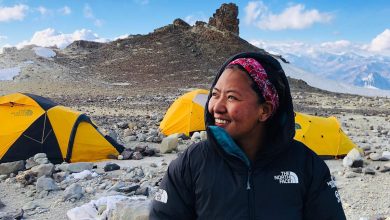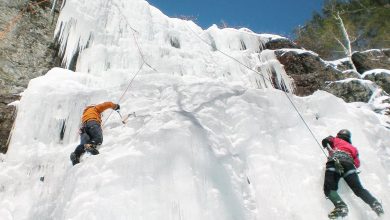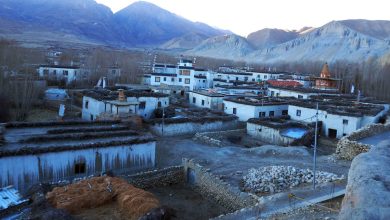Annapurna Base Camp Elevation and Altitude Gain
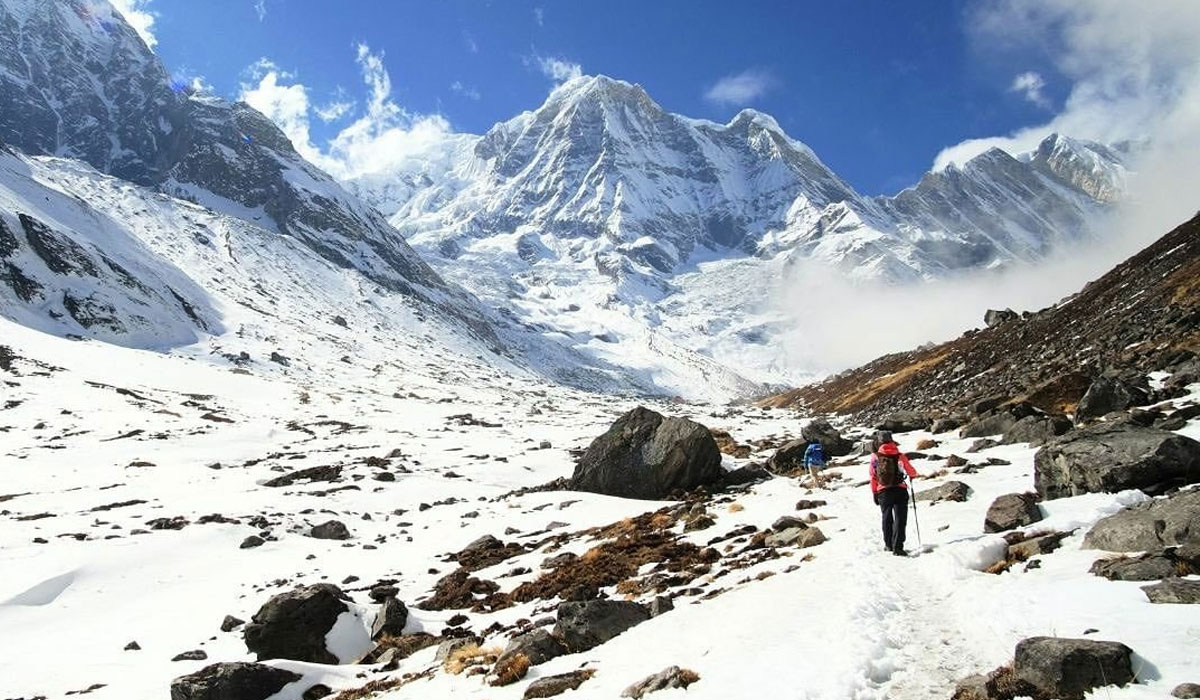
Annapurna Base Camp is one of the most popular base camps to visit if you are looking forward to exploring the beautiful Himalayas. The rich cultural aspects of the Gurung villages and a familiar experience of the rural lifestyle are added to the beautiful scenic routes and panoramic views of the mountains that you can see very clearly from the Annapurna Base Camp. The Annapurna Base Camp elevation is quite high at an altitude of 4,130 meters (13,551 feet) above sea level. You will pass the foothills of not just Mount Annapurna but also Mount Fishtail of Machhapuchhre Himal during your trek. There are several different altitude gains at different points and locations that you will come through during your Annapurna Base Camp trek. The Annapurna Base Camp altitude gain from Kathmandu, whatsoever, is 2780m(9,122 ft).
There are several interesting facts that you may be interested in knowing about Annapurna Base Camp elevation and altitude gain. Make sure to read till the end of this article to know more!
Annapurna Base Camp Elevation
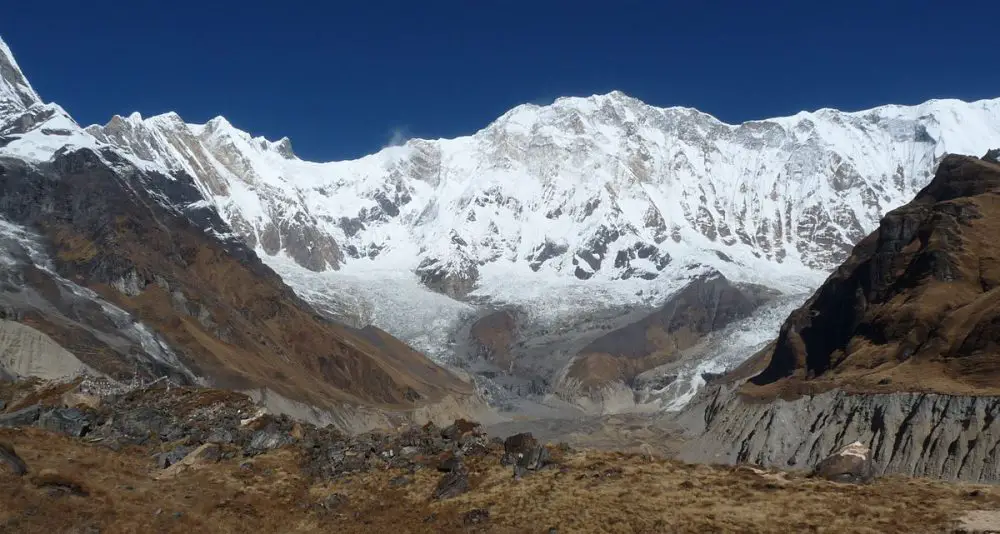
The Annapurna Base Camp elevation of 4,130 m (13,551 ft) makes for a fairly tough climb for a beginner. Likewise, there are lots of visitors who visit the base camp that do not necessarily possess the training or the expertise to climb tall heights. The success chances of even beginners are pretty high whatsoever.
Annapurna Base Camp’s elevation is quite high and almost half of the elevation of Mount Annapurna itself. Though it is much lower down the peak, there is a great chance that a person suffers from altitude sickness when here because of a lack of oxygen and the high altitude itself.
You are likely to take around 11 days to excel at the Annapurna Base Camp elevation. The following is the itinerary for different routes and elevations on your way to the Annapurna Base Camp:
Kathmandu to Pokhara:
The trip to Annapurna Base Camp starts at Kathmandu, which lies at an elevation of 1,350 m (4,429 ft) above sea level. You will take a direct flight to the beautiful city of Pokhara. The city is at a lower altitude of 822 meters (2,597 feet). From the city, you will head towards Kimche.
Pokhara to Ghandruk:
In around one hour of your hike, you will reach Ghandruk at an altitude of 1,940 m (6,365 ft). Ghandruk makes for an amazing trekking spot where you can explore the beauty of Gurung culture and the way of life of the rural area.
Ghandruk to Chhomrong:
From Ghandruk, you will be moving forward to Deurali via Chhomrong village at an elevation of 2,170 m (7,120 ft). This is a famous night stop point for trekkers.
Chhomrong to Bamboo:
From the village, you will move to 2,310 m (7,579 ft) altitude of Bamboo. The location makes for a great view and is a famous trekking spot as well.
Bamboo to Deurali:
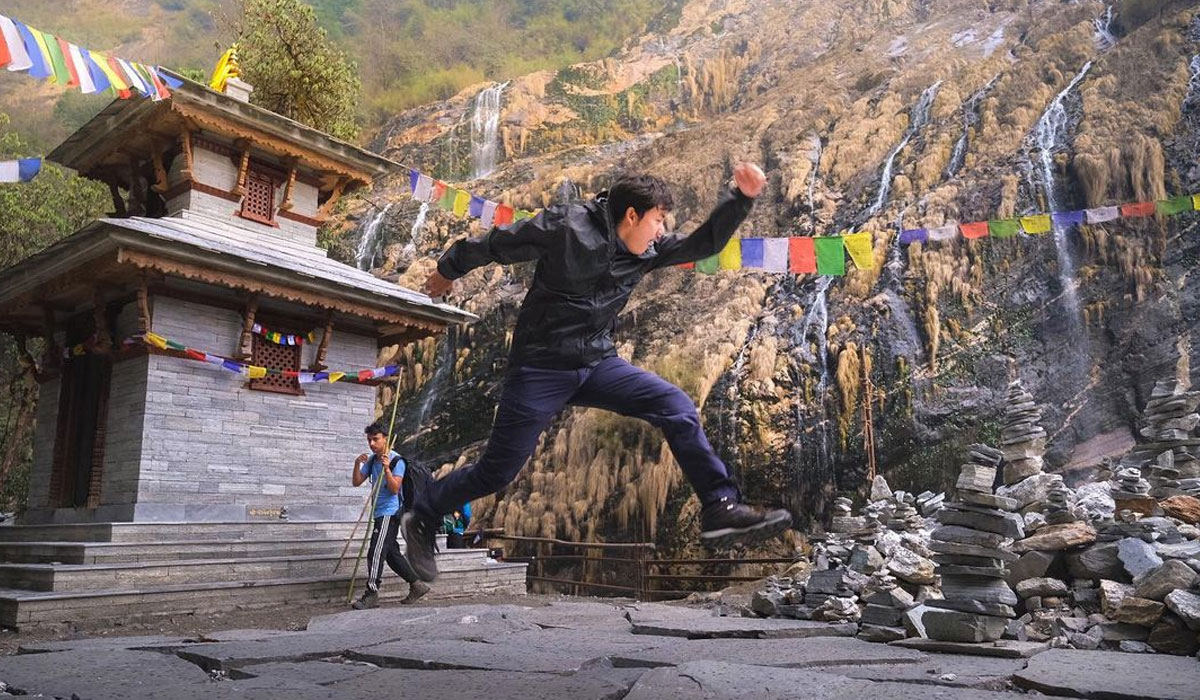
Your trek from Bamboo to Deurali is going to take 3 to 4 hours. Deurali is situated at an elevation of 3,230 m (10,598 ft).
Deurali to Machhapuchhre Base Camp:
The Deurali trail is not so smooth, and you will have to endure a fairly rocky set of trails to reach the Machhapuchhre base camp at 3,700 meters (12,139 feet). One gets to enjoy the view of the spectacular Fishtail Peak from the base camp before heading towards the Annapurna Base Camp.
Machhapuchhre Base Camp to Annapurna Base Camp:
From Machhapuchhre Base Camp, you will finally head to and reach the Annapurna Base Camp, situated at an elevation of 4,130 m (13,551 ft).
You will make your return from Bamboo to Mathque, from where you will catch a flight to Kathmandu Airport.
Annapurna Base Camp Altitude Gain
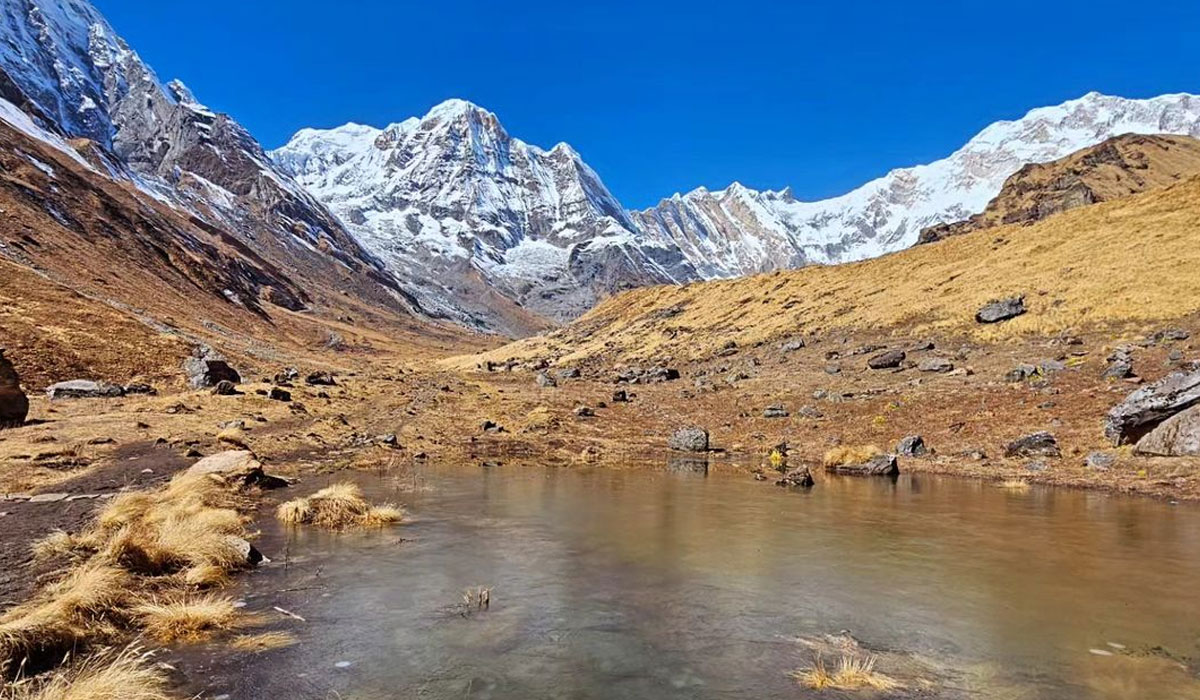
Your trail to the Annapurna Base Camp varies as per the location. You will not be able to reach the ABC without trekking. Hence, the following are the data of heights for you to get clarified about the altitude gain of Annapurna Base Camp:
| Location | Elevation |
| Kathmandu | 1,350 m (4,429 ft) |
| Pokhara | 822 m (2,597 ft) |
| Ghandruk | 1,940 m (6,365 ft) |
| Chhomrong | 2,170 m (7,120 ft) |
| Bamboo | 2,310 m (7,579 ft) |
| Deurali | 3,230 m (10,598 ft) |
| Machhapuchhre Base Camp | 3,700 m (12,139 ft) |
| Annapurna Base Camp | 4,130 m (13,551 ft) |
Everest Base Camp Vs. Annapurna Base Camp Altitude Gain
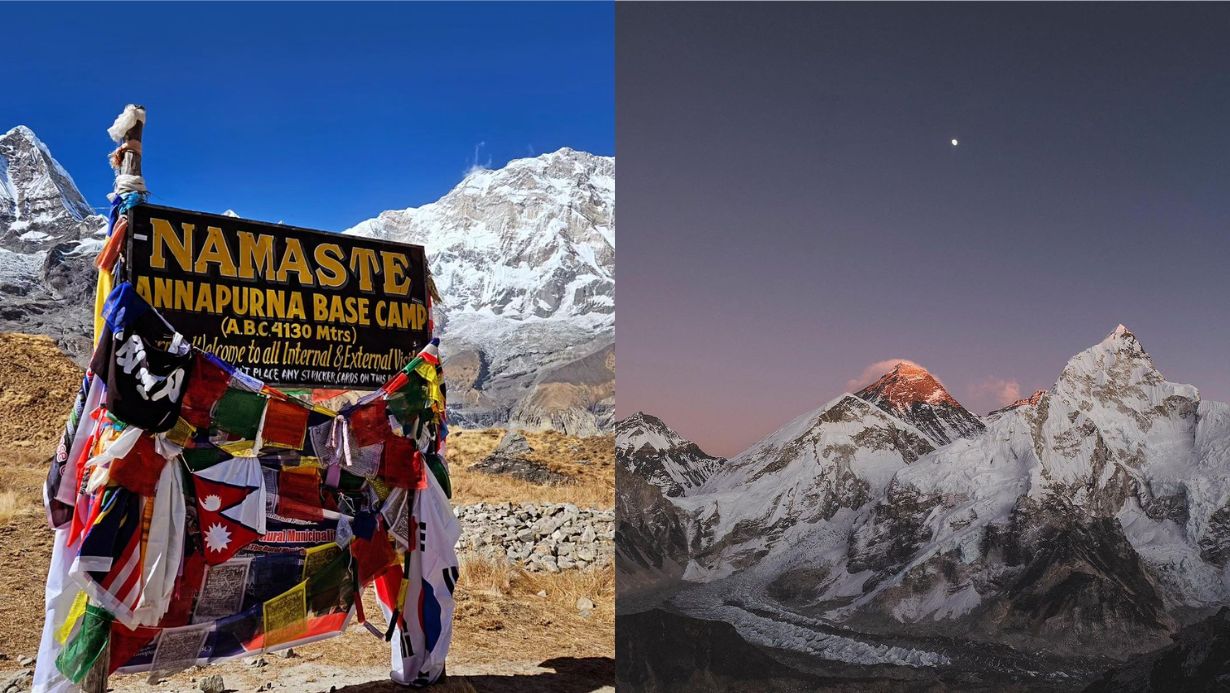
There is a difference in elevation between the Everest Base Camp and the Annapurna Base Camp. A lot of visitors tend to compare the two locations at all times. And, both EBC and Annapurna Base Camp are the most common places for trekkers and mountaineers to visit. However, the altitude gain of both locations also determines how tough either one is or how much time it takes to climb either one of the spots.
The elevation of the Everest Base Camp is 5,364 m (17,598 ft), while the elevation of the Annapurna Base Camp is 4,130 m (13,551 ft). Hence making the EBC both a higher and more difficult climb for the trekkers. However, this does not necessarily mean that trekking to the Annapurna Base Camp is any easier or beginner-friendly either. Both elevations have their drawbacks and qualities that every trekker must keep in mind before exploring any sort.
What do you need to prepare to reach the Annapurna Base Camp Elevation?
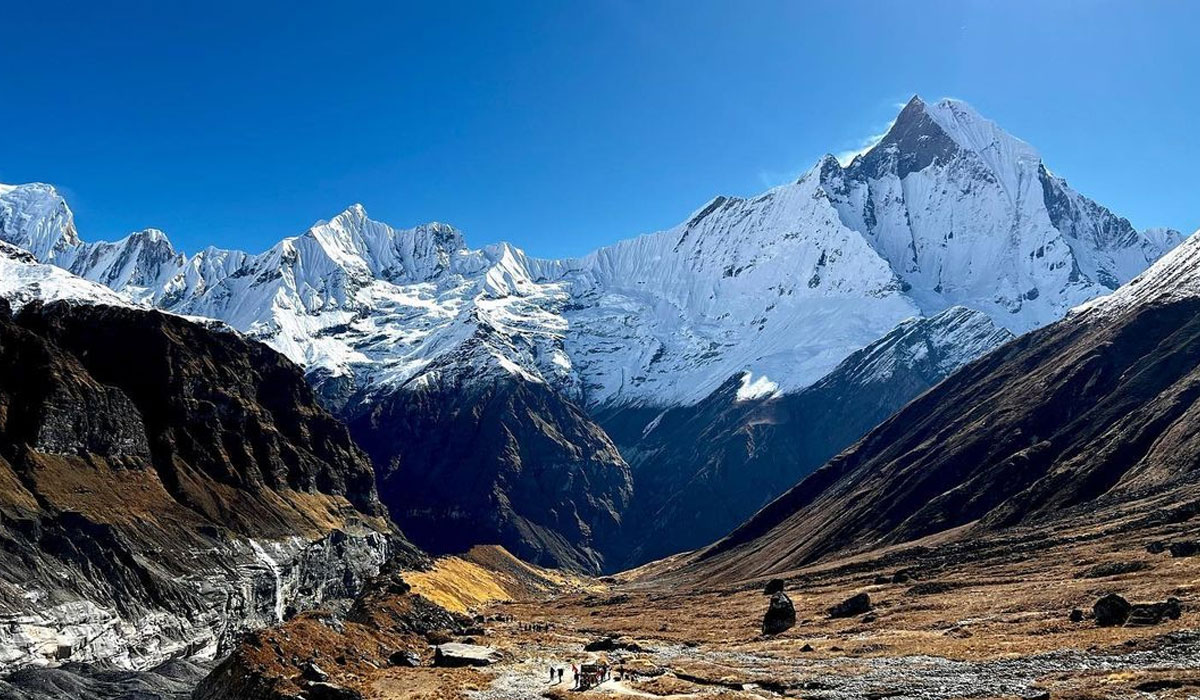
You have to make sure that you have everything in check when you are preparing to reach the Annapurna Base Camp Elevation at 4130 m (13,551 ft) above sea level. The view of the Annapurna Base Camp is worth your efforts of trekking to the location. You will have to carry along a light backpack where you can fit all your essentials like a few liters of water, a camera, snacks, sunscreen, rain gear, a first aid box, and any necessary layering clothes. Similarly, you will have to train physically to be able to reach the height of the Annapurna Base Camp. Anyone with a physical fitness level lower than a certain number won’t be able to reach the base camp.
How many mountains can you see from the Annapurna Base Camp?
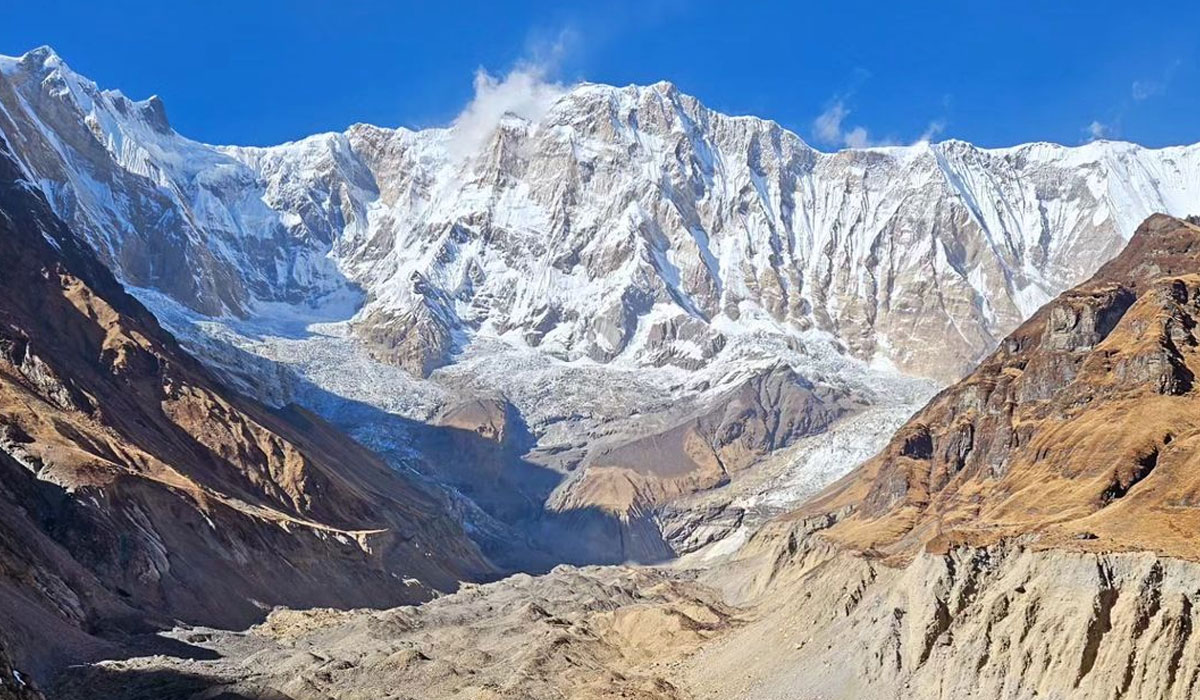
You can see several mountains from the Annapurna Base Camp, including:
- Annapurna I (8,091 m/ 26,545 ft)
- Annapurna III (7,555 m/ 24,787 ft)
- Annapurna South (7,219 m/ 23,684 ft)
- Gangapurna (7,455 m/ 24,459 ft)
- Gandharva Chuli (6,248 m/ 20,499 ft)
- Himalchuli (6,816 m/ 22,362 ft)
- Macchapucchre (6,993 m/ 22,943 ft)
Waking up at any point or location during your trek to the Annapurna Base Camp elevation will give you a chance to explore the beautiful mountains with the most splendid view you will ever have seen in your life. The sunset and sunrise view through these mountains, paired with the beautiful nature of the trail, is a heaven to witness at least once in your lifetime.
Difficulties of Annapurna Base Camp trek
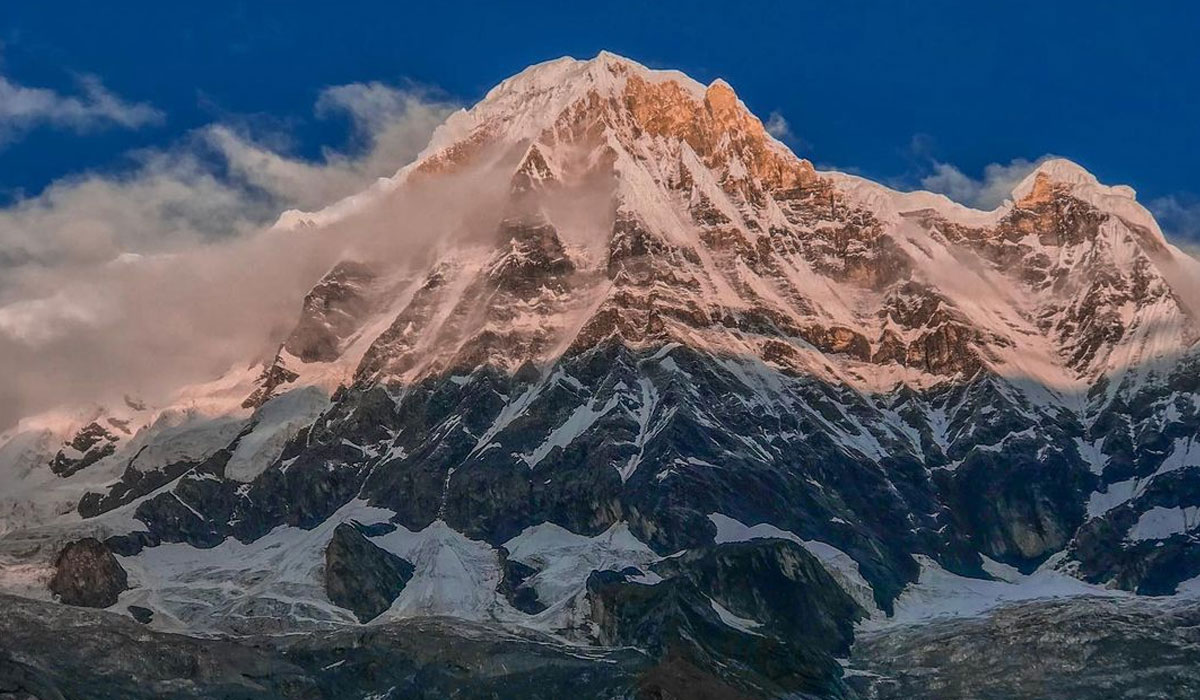
The Annapurna Base Camp trek is rather difficult in comparison to most other treks in Nepal. You never know with the trails, and if you’ve never been to the base camp before, then you need to go prepared with all the necessary equipment and gear, training, and supplemental oxygen. One also needs to be physically fit and not suffer from any diseases or physical conditions before confirming for the trek.
Furthermore, the trek is going to take around 11 days to complete. You are expected to trek for around 6 hours every day. The trek is a total of 115 kilometers (71 miles) in distance. Besides the difficulties, the Annapurna Base Camp elevation is quite high and offers a stunning view of the mountains above.
Altitude Sickness in Annapurna Base Camp Elevation
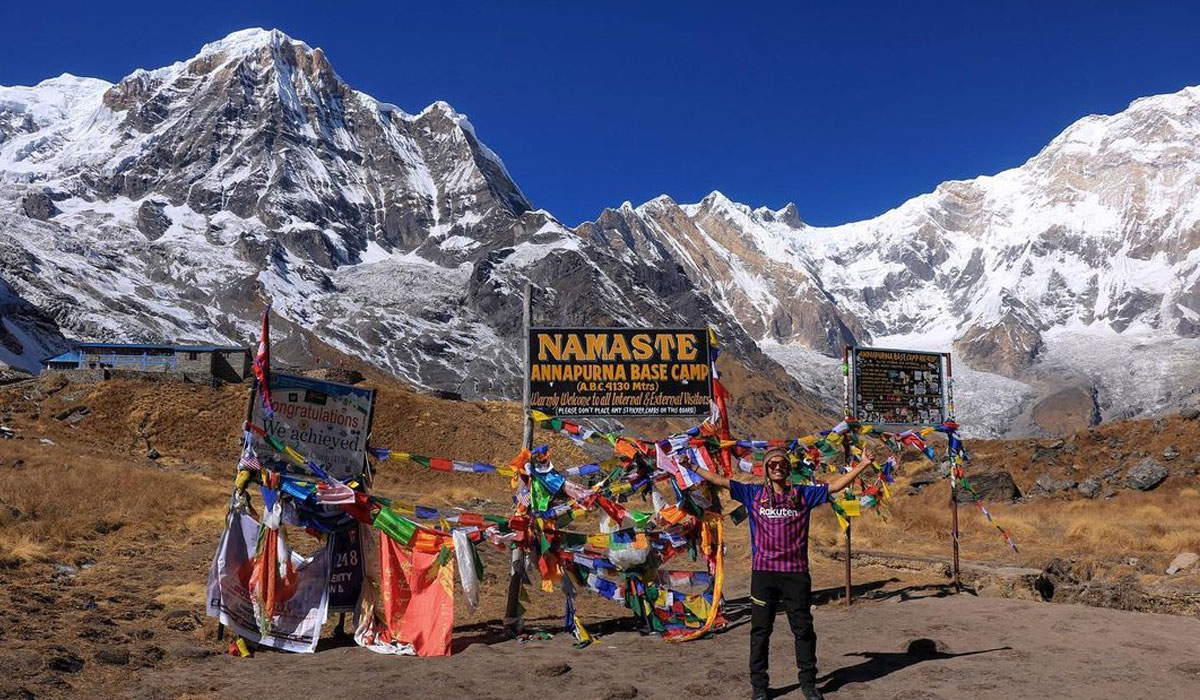
The Annapurna Base Camp is not at a necessarily safe height. If you have breathing problems or suffer from respiratory conditions, you should keep yourself off the grounds of the location in order to stay safe. Altitude sickness is very common among people who change their location from a moderate or lower elevation to a higher location. You never know what risk is waiting for you in a place that your body is not habituated to. If you come from a habitat that is especially at a lower elevation, then you cannot compromise on any altitude sickness signs, symptoms, or probabilities.
When a person is suffering from altitude sickness, he is going to feel nauseous. Likewise, his body is not going to respond well to the changing weather or altitude, which causes an imbalance in body coordination; the body gets more inactive while also causing intense headaches among the victims.
There are three stages of altitude sickness ranging from the least severe to the most severe, namely, acute mountain sickness (AMS), high-altitude cerebral edema (HACE), and high-altitude pulmonary edema (HAPE). AMS is not as extreme as HACE and HAPE. When you are in Annapurna Base Camp, the most likely condition is AMS, as the altitude, though high, is not as extreme as the peak itself. Likewise, there can never be a surety of what a person can suffer from, given everyone has different bodily functions and physical conditions. While the chances of a person suffering from HACE or HAPE are low at the Annapurna Base Camp itself, the chances are never zero.
What should you do to protect yourself from altitude sickness at the Annapurna Base Camp Elevation?
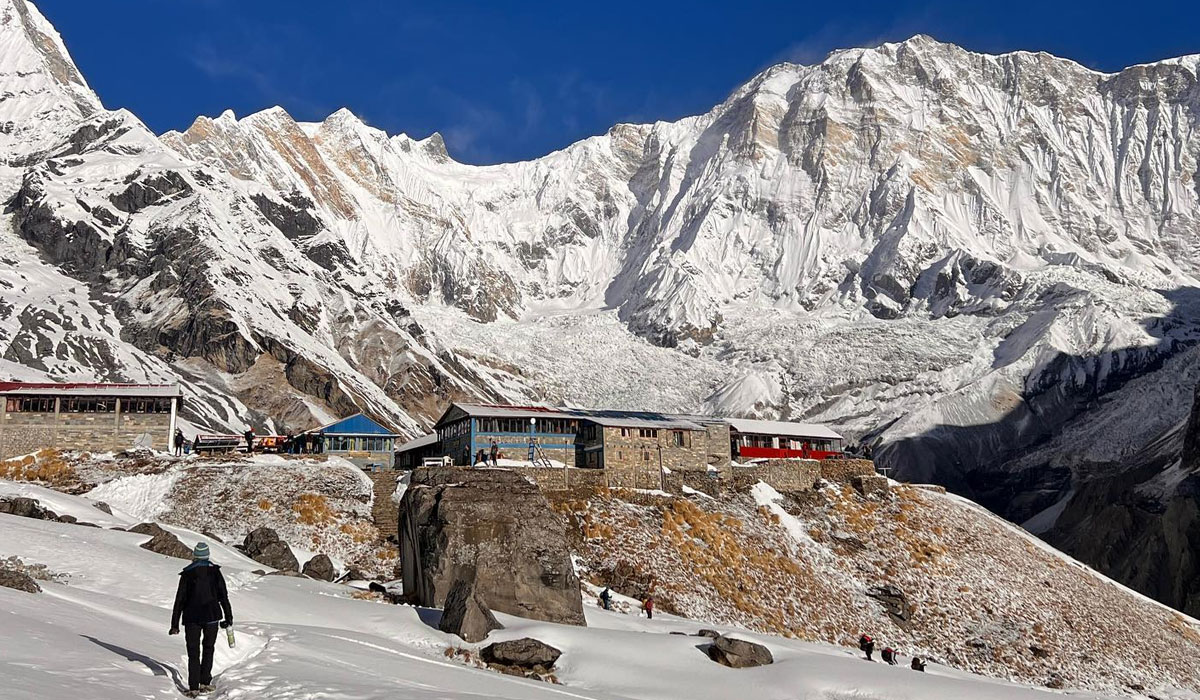
Going to the Annapurna Base Camp means that you are going to face tough times due to changes in altitude. While not everyone suffers from altitude sickness, it is always important to stay prepared and cautious at all times. You can follow the points below to make sure that you are protecting yourself from altitude sickness when at the Annapurna Base Camp elevation:
Supplemental oxygen: You have to carry along a bottle of supplemental oxygen when you are going to the Annapurna Base Camp. It is not probable whether you will come to use it. When you don’t carry supplemental oxygen with the surety of not suffering from any possible dangers of lack of oxygen, you might not just suffer from the condition itself but also from the lack of necessary resources. Taking supplemental oxygen is going to keep you on the safer side.
Medications: Make sure to consult your physician before you attempt to go to the Annapurna Base Camp elevation, which is at a fairly high altitude. Taking the wrong medication is going to cause lots of problems for a person. You have to make sure that your body habituates well with the medicines you are taking and that your medications fit perfectly with your mental and physical needs.
Descend: If your body is not responding well to the conditions of the trails or the weather of the Annapurna Base Camp, you must take this as a sign to abort your trekking. When a body feels uneasy and uncomfortable out of nowhere, it is almost always a bad sign. Descending is always the most preferable option for anyone who wants to avoid any likelihood of suffering in the base camp.
Acclimatization: Acclimatization, even while going to the elevation of Annapurna Base Camp, becomes crucial because the altitude varies from where you start. The changing altitude is going to cause you lots of issues if you are only looking to finish your trekking as soon as you can. It is important to go slow and not risk your health or any chance of making it out safely from the base camp.
Hyperbaric therapy: A compression treatment close to the ones that scuba divers get can immediately better the condition of a person suffering from altitude sickness. One can learn the basics of this therapy or directly consult someone who can guide them in doing so before starting their journey.
Frequently Asked Questions (FAQs)
How much altitude gain is needed for Annapurna Base Camp?
The altitude gain needed for Annapurna Base Camp is 4,130 m (13,551 ft).
How high is Annapurna 2 base camp?
Annapurna 2 base camp is 4,130m/ 13,550 feet above sea level.
What is the difficulty level of Annapurna Base Camp?
The difficulty level of Annapurna Base Camp is at Level 3.
How high is Annapurna Camp 1?
Annapurna Camp 1 is 4,130 m above sea level.
Is Annapurna Base Camp harder than Everest?
No, EBC is more challenging than Annapurna Base Camp.
Can a beginner do the Annapurna Base Camp Trek?
Yes, a beginner can do Annapurna Base Camp Trek with the right amount of physical fitness and training.
How many km is the Annapurna Base Camp Trek?
Annapurna Base Camp Trek is approximately 115 to 130 kilometers, taking 7-12 days to complete.
What is the fastest time on the Annapurna Base Camp Trek?
The fastest recorded time on Annapurna Base Camp Trek is 20 hours and 24 minutes, which was completed by Mira Rai in 2018.
Do you need Diamox for the Annapurna Base Camp Trek?
No, you don’t necessarily require a Diamox for Annapurna Base Camp Trek.
How do I prepare for the Annapurna Base Camp Trek?
A multi-day basis training two weeks earlier than the actual trek to the Annapurna Base camp is plentiful to prepare for the trek.
Also, read;
